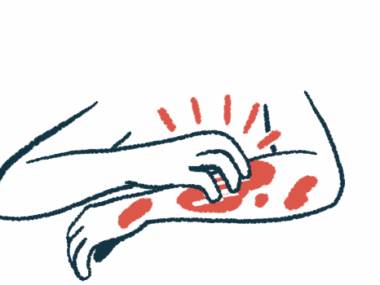Paradigm to seek FDA approval for epidermolysis bullosa treatment
SD-101 is a cream that is believed to promote wound healing all over the body
Written by |

Note: This story was updated June 18, 2025, to correct the source of the analysis of Phase 3 trial data.
Paradigm Therapeutics is planning to seek U.S. Food and Drug Administration (FDA) approval for the experimental cream SD-101 to treat all forms of epidermolysis bullosa (EB).
Paradigm said it plans to submit a new drug application in the latter part of this year. If SD-101 ultimately is approved, Paradigm plans to sell it under the name Zorblisa.
“We are excited about the opportunity to complete the development activities for SD-101 (Zorblisa) and to move a path forward [toward] registration of this therapy for patients with all EB subtypes,” Robert Ryan, PhD, CEO of Paradigm, said in a company press release.
In all types of EB, patients have abnormally fragile skin that’s prone to wounds and blisters. SD-101 is a cream that contains 6% allantoin, a compound that’s believed to promote wound healing. The experimental cream is designed to be able to be applied across the entire body, according to Paradigm.
“There is a tremendous need for novel whole skin surface treatment options for treating the debilitating skin effects across all patients with epidermolysis bullosa,” Ryan said. “The Paradigm Therapeutics team will be working passionately to provide patients with a new therapeutic alternative in this disease with limited whole-body treatment options. Paradigm’s goal is to provide this therapy to patients on a global basis and is working in parallel with potential partners to work [toward] this goal as quickly as possible.”
Paradigm acquired rights to SD-101 in 2023 through a deal with the therapy’s prior developer, Amicus Therapeutics.
We believe the clinical data show beneficial effects of the use of SD-101 across the range of EB patients.
A Phase 3 trial called ESSENCE (NCT02384460) tested SD-101 against a control cream containing the same ingredients except for allantoin. The ESSENCE trial failed to meet its main goals — SD-101 was no better than the control cream at promoting wound healing or easing pain and itching — but in a subsequent analysis researchers argued this is because the control cream was more effective than expected, possibly because the control cream contained substances that may promote healing such as lanolin oil and cod liver oil.
“We believe the clinical data show beneficial effects of the use of SD-101 across the range of EB patients, and strongly support progression [toward] registration,” Ryan said, adding that data from ESSENCE and other trials “indicate that SD-101 demonstrated a broad benefit with whole-body treatment of the lesions and wounds on the entire skin surface in pediatric and adult patients across all EB patients, who have limited whole body treatment alternatives.”
“Results also demonstrated that SD-101 has a favorable safety profile when used long term,” Ryan said. In the ESSENCE study, the most common side effect was itching.
Epidermolysis bullosa treatment receives major investment
To support the planned application seeking FDA approval of SD-101, Paradigm has secured a $12.5-million investment from investment company Eshelman Ventures. Fred Eshelman, the founder of the investment company, has been appointed as a strategic adviser for Paradigm.
“As an investor and strategic [adviser], I am deeply committed to working closely with this exceptional team as we work tirelessly to bring this innovative therapy to patients in need,” Eshelman said. “The urgency of addressing the challenges faced by EB patients is what drives us; our goal is to provide an improved quality of life in this area of unmet need. Together, we will strive to revolutionize treatment options and make a meaningful impact on the lives of those affected by this debilitating disease.”






